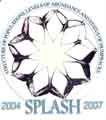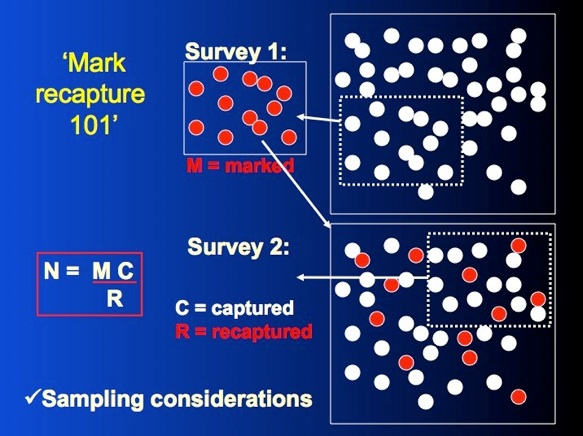
Home Methods 1 | Photo Identification | Mark and Recapture Biopsy | Summer Feeding Areas, Wintering Grounds and Migration | Human Impact | Population Estimates
Activity 1: Questions about SPLASH | Activity 2: Interpreting Graphs | Activity 3: Mark and Recapture | Activity 4: Estimating Humpback Population Growth | Activity 5: Whale Tails: Photo ID | Activity Answers
Whale biologists used a number of methods to estimate the North Pacific humpback population. One of the methods was “mark and recapture” which was described previously.
The graphic below shows how “mark and recapture” works. In “survey 1”, “x” number of humpbacks (in red) are “marked” (by photo ID). Survey 2 is completed in the same area as the previous survey. The number of animals “recaptured” (by photo ID), from Survey 1 are recorded. In the example below, there are four recaptured in Survey 2.

Cascadia Research
| Biopsy (skin) sampling is another important population tool that the SPLASH team used. Skin and blubber samples were collected using a small biopsy dart that was fired from a crossbow. After the dart entered the whale (one inch), it “popped out” and the dart was subsequently retrieved floating in the water with the sample encased.
The biopsy samples were collected for genetic analysis and provide a better understanding of humpback population structure and their migration. The samples were also used to determine the whale’s gender and to assess the level of pollutants stored in the whale’s blubber. Over 6,000 biopsy samples were taken during the three-year study. The graphic below shows the various steps in analyzing mitochondrial DNA from a humpback biopsy sample. |

|

Courtesy of Scott Baker, Oregon State University
